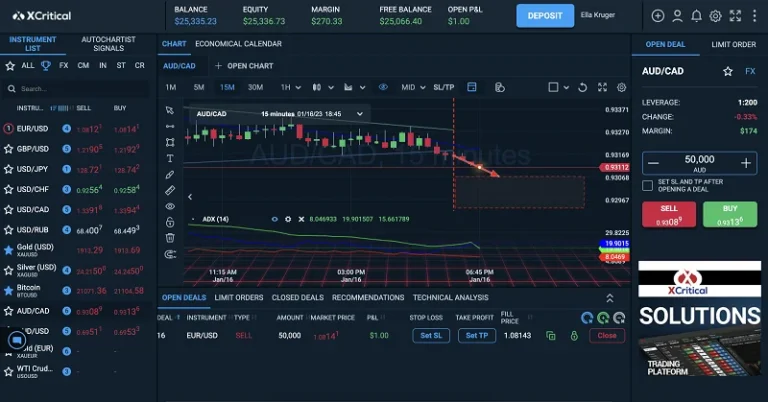For someone to alter or delete a transaction, they would have to control most of the network’s computing power, which is extraordinarily difficult and expensive. Examples of public blockchains embrace Bitcoin, Ethereum, and Cardano. If any attempt is made, the blockchain rejects any modification from the earlier block. A public distributed ledger is a set of digital knowledge which is replicated and shared throughout completely different locations and organisations. It makes the blockchain accessible for everyone Initial exchange offering with login credentials. Everybody connected in the ledger could witness the modifications that someone makes from any corner of the world.
Understanding Public Blockchains
One of the transformative guarantees of blockchain technology is that it has revolutionized how knowledge public and private blockchain difference is recorded and verified across industries. Well, let’s dig deeper into what this expertise is all about and what it has to supply. As companies race to integrate blockchain options, the business has grown exponentially.

Understanding The Blockchain Expertise
Also, the system is so difficult that we can’t use it for usual payments. Blockchains are protected from unauthorised access via cryptography. Cryptography encrypts and secures the communication between the sender and recipient with advanced mathematical algorithms.
A Radical Comparability: Public Blockchain Vs Non-public Blockchain

Public and private blockchains serve completely different functions and are designed with distinct traits. Public blockchains prioritize decentralization and transparency, making them appropriate for functions that require open participation and trustless interactions. In distinction, personal blockchains concentrate on privateness and management, catering to organizations that have to handle data securely and efficiently. Understanding these differences is crucial for selecting the suitable blockchain solution for particular use instances. Permissioned blockchains have considerably lower operational costs and decrease transaction fees in comparability with public blockchains.
Bitcoin is primarily used for peer-to-peer transactions, while Ethereum enables the creation of good contracts and decentralized applications (DApps). A. Public blockchains are open and accessible to anybody, while non-public blockchains require an invitation to affix and are controlled by a single entity or consortium. Private blockchains are restricted and may solely be accessed by a selected group of individuals. These networks are sometimes utilized by organizations or consortiums to maintain control over the info and individuals.
Public blockchains are transparent, decentralized networks accessible to anybody across the globe. Every participant, or node, can validate transaction processes, initiate transactions, or even create sensible contracts. Well, choosing between a private and non-private blockchain is determined by understanding your particular enterprise requirements, similar to performance, security, compliance, cost, and scalability.
Layer 2 Solutions improve scalability and transaction speed by creating protocols on high of the current blockchains. These solutions leverage the security of the underlying layer 1 chain and handle the transactions off the principle blockchain. This leads to price reduction accelerates transaction throughput, and minimizes the load on the primary blockchain. Also, the sort of information users can entry can also be based on the roles assigned to them. Hence the permissioned blockchain ensures that the delicate knowledge stays accessible to only those customers who have the required permissions.
The key distinction between public and private chains is their availability. Blockchain operates on a community of computers called, ‘nodes,’ and each of them holds the same copy of the ledger with recordings of transactions. Let’s delve into the elemental rules of blockchain know-how. Handling many transactions and utilizing proof of work requires plenty of energy consumption, resulting in excessive environmental issues, and is sort of costly. With these fundamentals in place, let’s delve deeper into the distinctive features and advantages of each blockchains.
Public blockchains have a larger community, which may get slow during elevated exercise. Financial methods like banks and stock exchanges use the services of blockchain to manage online funds, market trading, and accounts. Each verified block has a cryptographic hash that incorporates references to the earlier ones. It provides safety and stability for all of the transactions occurring.
- Meanwhile, improvements like blockchain interoperability and hybrid models are paving the greatest way for a more linked and versatile future.
- Consortium blockchains strike a steadiness between decentralised operation and network management.
- Blockchain 3.0 introduces new privacy options such as zero-knowledge proofs, ring signatures, and stealth addresses.
- With their managed entry, improved scalability, and seamless integration capabilities, they’re set to play an important position in the future of digital transformation.
Inside the community, confidential info is saved safe yet nonetheless verifiable. Unless they participate in a transaction, the user’s identification is hidden from different customers after which, their true identity is exposed. Needless to say, personal blockchains are quickly gaining popularity throughout industries, particularly in finance, provide chain administration, and healthcare. SMEs are leveraging these networks to streamline operations, improve knowledge security, and comply with regulations. And that is all without the resource-intensive calls for of public blockchains.
It is a decentralized and open ledger system that eliminates centralization-related issues such as transparency and fewer safety. The decentralized nature of public blockchain could require some methodology to confirm the authenticity of information. That method is a consensus algorithm via which members within the blockchain attain widespread ground on the current state of the ledger. Proof of labor (PoW) and proof of stake (PoS) are two frequent consensus strategies.

Prominent examples embody Hyperledger Fabric, recognized for its modular structure, and R3 Corda, designed for secure monetary transactions and interoperability. Smart contracts are self-executing laptop programs that routinely implement the settlement. They are built on blockchain know-how and can be programmed to trigger actions primarily based on certain conditions.
Blockchain has gradually turn out to be an important part of the enterprise software stack in modern-day companies. It has aided the development of assorted applications that have streamlined and scaled enterprise processes. It makes use of directed acyclic graphs (DAGs) as a knowledge structure to course of transactions. The important characteristic of Blockchain 1.0 is its use of a proof-of-work (PoW) consensus algorithm, which is used to validate transactions and preserve the ledger’s integrity. A blockchain shops data in blocks which are chronologically linked via chains. A technology that accounts for this information’s access and monitoring is termed „Blockchain Technology”.
Start your own high-profit forex brokerage in just a few days or scale your existing business with the best-in-class forex software XCritical https://www.xcritical.in/. Get the perfect Turnkey Forex Solutions that will provide your business with efficiency, stability, and maximum profit.